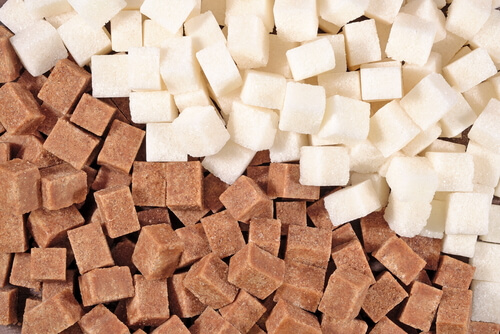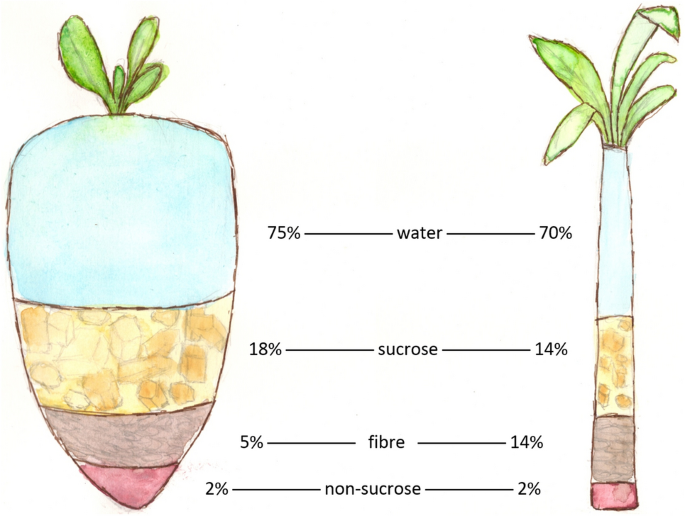When considering beet sugar vs cane sugar, some opt for one for recipes while others select the alternative.
When considering beet sugar vs cane sugar, some opt for one for recipes while others select the alternative.
Blog Article
Discover the Uses and Perks of Beet Sugar Vs Cane Sugar in Your Daily Diet Plan
Exploring the distinct top qualities of beet and cane sugar reveals greater than simply their sweetening capabilities; it highlights their unique influence on health and cooking arts. Beet sugar, known for its subtle flavor, is often favored in delicate desserts, whereas cane sugar, with its hint of molasses, includes richness to robust meals. Each kind holds its own nutritional profile and glycemic ramifications, inviting a much deeper understanding of their duties in a well balanced diet regimen and lasting intake techniques.
Beginning and Manufacturing Procedures of Beet and Cane Sugar

The distinct climates and dirt types needed for expanding sugar beetroots and sugarcane add to distinctions in their growing methods and geographical distribution, affecting the business economics and sustainability of their manufacturing. beet sugar vs cane sugar.
Nutritional Comparison Between Beet Sugar and Cane Sugar
Regardless of stemming from different plants, beet sugar and cane sugar are nutritionally very similar, both mainly including sucrose. Each supplies regarding 4 calories per gram, translating to approximately 16 calories per teaspoon. Structurally, both sugars are composed of around 99.95% sucrose, with very little amounts of various other compounds like wetness and trace element, which do not substantially modify their dietary accounts.

Ultimately, when selecting in between beet sugar and cane sugar based on nutritional content alone, both deal similar advantages and drawbacks as they are essentially types of the click to read very same particle-- sucrose, providing fast energy without other nutrients.
Influence on Wellness: Glycemic Index and Caloric Material
Discovering further right into the impacts of beet sugar and cane sugar on health, it is vital to consider their glycemic index and calorie web content. The glycemic index (GI) of both beet and cane sugar is around 65, categorizing them as high-GI foods, which can create fast spikes in blood glucose levels.
Each sort of sugar has around 4 calories per gram, making their calorie content equivalent. For those checking caloric consumption, particularly when managing weight or metabolic wellness problems, comprehending this equivalence is crucial (beet sugar vs cane sugar). Extreme intake of any kind of high-calorie, high-GI food can contribute to wellness issues such as obesity, heart disease, and insulin resistance.
Environmental and Economic Considerations of Sugar Manufacturing
Beyond wellness effects, the manufacturing of beet and cane sugar additionally increases significant environmental and economic worries. Sugar beet growing has a tendency to require cooler environments and has a lower geographical footprint compared to sugar cane, which grows in tropical areas.
Furthermore, using pesticides and plant foods in both beet and cane sugar farming can bring about soil deterioration and air pollution, more influencing biodiversity and local water bodies (beet sugar vs cane sugar). The choice between growing sugar beet or cane often rests on neighborhood ecological conditions and financial elements, making the sustainability of sugar manufacturing an intricate problem
Culinary Applications and Taste Distinctions
While the ecological and economic facets of sugar manufacturing are undoubtedly considerable, the choice in click site between beet and cane sugar also influences cooking applications and flavor accounts. Beet sugar, obtained from the sugar beet plant, is known for its extremely neutral taste.
Walking cane sugar, removed from sugarcane, typically maintains molasses traces, which pass on an unique richness and depth. The mild variant in dampness material between beet and cane sugar can impact the texture and consistency of recipes, making cane sugar a preferred option for certain recipes that profit from its distinct residential or commercial properties.

Verdict
In final thought, both beet and cane sugar have distinct origins and production procedures, using similar dietary accounts with slight differences in sodium material and flavor. While their influence on wellness, particularly regarding glycemic index and calories, is comparable, the choice between them frequently boils down to ecological, financial variables, and details cooking requirements. Comprehending these facets can direct customers in making informed choices that align with their health and wellness goals and flavor preferences.
Report this page